That night at dinner (it was four years ago, but I remember it is as if were yesterday) a beauty pageant queen, a truly delightful young woman, dressed in her sash and crown taught us how to fold our napkin to look like a turkey.
It was a dark and stormy night (I’ve always wanted to write that, but it really was). Anyway, it was a dark and stormy night. I sat for a few minutes in my car, waiting for the rain to let up before dashing through the shrubs and around to the front door of the old house. The guest list, for dinner, might have been drawn up by Agatha Christie herself. The Dean of the College was there, of course. After all, it was her house. And the Dean’s young son. The guest speaker was there with her husband in tow. Also, a hearing-impaired emeritus professor. Ninety year-old twin alumnae. A lawyer from the Attorney General’s office. Several representatives from the alumni association and from the staff. And of course, our beauty queen. She showed us how to fold a towel so that it looked like a monkey. And then she turned her attention to the napkins. Somewhere, upstairs, a dog barked. Rain hit the windows like a spray of bullets. I’d like to tell you that’s when the power went out. But I can’t. Because it didn’t. And this is a mostly true story. Even the dead body parts. Well, not dead “body parts.” Even the parts about the “dead bodies.”
The dinner conversation was gracious and genteel, and notwithstanding the generational changes that were represented by a span of some seventy years, the ladies still shared a certain connection. And then, one of the women leaned across the table and asked, “Do you know about the murders?”
It was September 16, 1922. A young couple strolled down Easton Avenue, along the border of New Brunswick and Somerset. Even today, as I drive down the road, if I look past the strip malls and the housing, the hospital and the Dunkin’ Donuts, I can still find glimpses of the countryside. Ninety-two years ago, the young couple turned off Easton, down DeRussey Lane, heading toward an abandoned farmhouse when they were stopped short by a gruesome discovery, a man and a woman, each shot in the head.
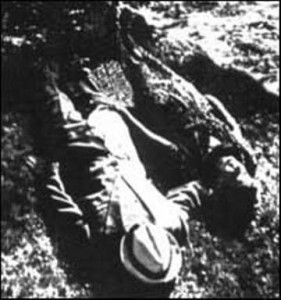
He was a distinguished looking man, even in death. She, a pretty woman, or would have been were it not for her throat, “a mass of maggots, from ear to ear.” A bloody calling card identified the man as an Episcopal priest, The Reverend Edward W. Hall.
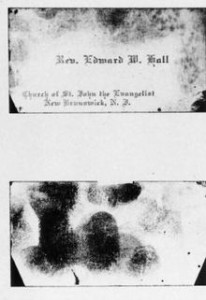
Once the Reverend had been identified, it took no great detective work to identify the woman. It was not the Reverend’s wife. Everyone in the congregation knew the Reverend’s poorly-kept secret, his affair with a married member of the church choir, Mrs. Eleanor Mills.
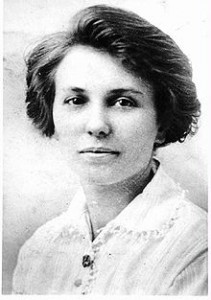
The police investigation focused on three suspects, the Reverend’s wife, Mrs. Frances Hall, who allegedly planned the murder and her two brothers, Henry Hewgill Stevens and Willie Carpender Stevens, who allegedly carried out the crime. But the investigation in 1922 led to no indictments. In 1926, responding to growing media attention, the Governor ordered a new investigation. As a result of this new investigation, a fourth suspect, a cousin, Henry de la Bruyere Carpender was identified, but never charged. Mrs. Hall and the two Stevens brothers, however, were indicted. The trial which began November 3, 1926, captured the attention of the American public. The media coverage of the trial was extensive. Notable among the court reporters were Damon Runyon and Mary Roberts Rinehart.
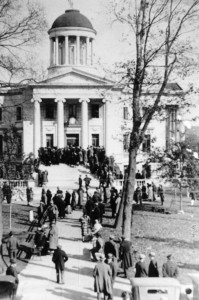
After a contentious and very public trial, marked by conflicting testimony, missing and compromised evidence, the defendants were found not guilty.
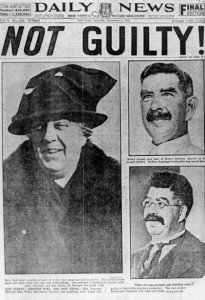
Did Mrs. Hall and her brothers get away with murder? The murders have been the subject of numerous books and movies. (In 1964, attorney William Kuntsler penned The Hall-Mills Murder Case: The Minister and the Choir). But the case has never been solved. Sitting in the Reverend’s dining room that night with the Dean and her guests, the emeritus professor, the 90 year-old twin alumnae and of course, the beauty queen, it was easy to imagine the Reverend, with a gunshot wound just above his right ear and an exit wound at the back of his neck and his mistress, with her multiple gunshot wounds and the string of maggots, like pearls across her throat, trapped somewhere between judgment and justice, locked in an eternal embrace, in the Reverend’s upstairs bedroom.
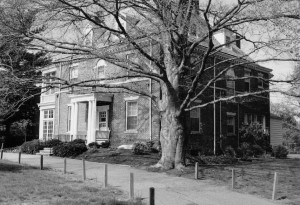
(Photos retrieved from the Franklin Photo Archive at the Franklin Twp. Library.)
— Jeff Markowitz
Jeff Markowitz is the author of the darkly comic thriller Death and White Diamonds as well as three books in the Cassie O’Malley mystery series.

Entranced.